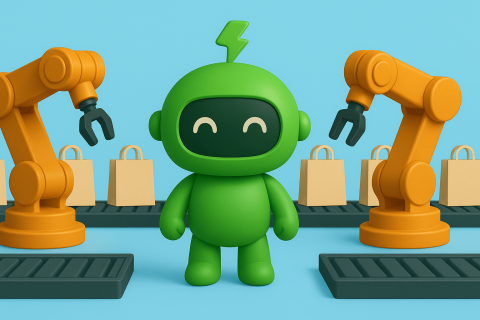
If you’re running a Shopify store, you’ve probably wondered if there’s a better way to handle repetitive tasks like tagging customers, notifying your team, updating orders, or sending follow-ups. You’re not alone. One of the most common questions merchants ask is: does Shopify have automation built in?
The short answer is yes, but only to a point. Shopify includes some native automation features, but they’re limited in scope. To truly automate the way your store operates, most merchants need to bring in tools like Arigato. In this article, we’ll walk through what’s built into Shopify, where it falls short, and how to take automation further without writing a line of code.
What kind of automation is built into Shopify?
Shopify includes basic automations out of the box. You’ll get transactional emails for order confirmations, shipping updates, and customer account actions. There’s also a built-in abandoned checkout reminder, and some limited tagging and notifications through integrations.
These features are great for getting started, but they’re not flexible. They don’t respond to the specific conditions in your store — like tagging customers based on product purchases or sending alerts when inventory dips below a threshold.
What is Shopify Flow — and who can use it?
Shopify Flow is Shopify’s native workflow builder. It lets you set up trigger-action workflows, such as tagging customers after purchase or archiving high-risk orders. It’s available on all paid plans and uses a visual interface to make things simple.
While Flow covers common tasks like sending a Slack message or tagging based on order value, it quickly becomes restrictive for stores that need deeper logic or custom behavior. You can’t send custom emails, or easily connect to external tools unless they support Shopify Flow natively. That leaves a lot of business-critical workflows out of reach.
How Arigato fills the automation gaps
Arigato Automation gives you far more control. It’s a Shopify workflow builder that supports advanced triggers, complex logic, and deep integration with your store’s data. You can trigger workflows from nearly any Shopify event — not just new orders or checkouts.
For example, you can automatically tag customers based on their total lifetime spend and segment them for future campaigns.
You can also send an email to a vendor when certain products are ordered, keeping your fulfillment partners in the loop without manual communication. If you want to ensure no orders are forgotten, you can set up a workflow that triggers if an order goes unfulfilled for a certain number of days.
Need to keep product data clean? You can automatically set or update metafields when inventory hits zero or changes in status. Arigato also supports scheduling — so you can run workflows on a delay, or even daily at specific times.
These are just a few examples. With over 300 Shopify automation templates, Arigato gives you a faster path to building logic that fits how your store actually runs.
Does Shopify have automation TL;DR
Yes, Shopify has automation, but it’s limited to basic workflows and simple conditions. If you’re trying to build logic that reflects how your store operates in real life, you’ll likely need more control than Shopify offers natively.
Arigato Automation fills the gaps. You can create flexible workflows with real logic, connect your store to the tools you already use, and keep your business running smoothly without manual effort.
Start with just one automation — then scale from there. The right workflows don’t just save time. They keep your team focused, your store consistent, and your customers better served.